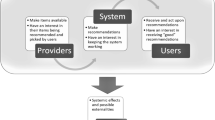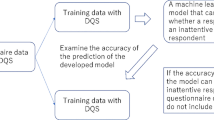Abstract
Fake reviews and reviewers pose a significant challenge for online review platforms as they can mislead consumers and harm businesses’ reputations. Traditional methods for detecting fake reviews rely on supervised learning techniques, which require a large amount of labelled data and are not scalable for large datasets. However, detecting fake reviews is challenging due to the uncertainty surrounding reviewer behaviour. Fake reviewers may exhibit similar behaviour patterns to legitimate reviewers, making it difficult to distinguish between them. To address this challenge, this research proposed a novel model, SUH-AIFRD, for detecting fake reviewers in online review platforms. The model uses a hybrid approach of S3SVM, SSDT, and USKMW methods to identify content, behavioural, activity, and relationship features indicative of fake reviews. Behavioural features are utilized to address the problem of reviewer behavioural uncertainty. The SUH-AIFRD model achieved high accuracy of 94.99%, with impressive precision, recall, and F1 score at 94.74%, 95.37%, and 95.05%, respectively. The proposed model has significant implications for businesses, consumers, and online review platforms, providing a more effective way to combat the problem of fake reviews.












Similar content being viewed by others
Availability of supporting data
The data and analyses generated during this study are fully available in the published articles [29].
References
Mewada A, Dewang RK (2022) A comprehensive survey of various methods in opinion spam detection. Multimedia Tools and Applications 82(9):13199–239
Mewada A, Dewang RK (2022) Research on false review detection methods: A state-of-the-art review. Journal of King Saud University-Computer and Information Sciences 34(9):7530–7546
Jain PK, Pamula R, Srivastava G (2021) A systematic literature review on machine learning applications for consumer sentiment analysis using online reviews. Computer science review 41:100413
Maurya SK, Singh D, Maurya AK (2023) Deceptive opinion spam detection approaches: a literature survey. Appl Intell 53(2):2189–2234
Kaur R, Singh S, Kumar H (2018) Rise of spam and compromised accounts in online social networks: A state-of-the-art review of different combating approaches. J Netw Comput Appl 112:53–88
Jain PK, Pamula R, Ansari S. A supervised machine learning approach for the credibility assessment of user-generated content. Wireless Personal Communications 118:2469–85
Zhang D, Li W, Niu B, Wu C. A deep learning approach for detecting fake reviewers: Exploiting reviewing behavior and textual information. Decision Support Systems 166:113911
Jain PK, Prakash A (2022) Predicting consumer recommendation decisions from online reviews: A rough set approach. Wireless Pers Commun 125(4):3443–60
Walther M, Jakobi T, Watson SJ, Stevens G (2023) A systematic literature review about the consumers’ side of fake review detection-Which cues do consumers use to determine the veracity of online user reviews?. Computers in Human Behavior Reports 100278
Sahut JM, Hajek P (2022) Mining behavioural and sentiment-dependent linguistic patterns from restaurant reviews for fake review detection. Technol Forecast Soc Chang 177:121532
Kumar N, Venugopal D, Qiu L, Kumar S (2018) Detecting review manipulation on online platforms with hierarchical supervised learning. J Manag Inf Syst 35(1):350–80
Hussain N, Mirza HT, Hussain I, Iqbal F, Memon I (2020) Spam review detection using the linguistic and spammer behavioral methods. IEEE Access 8:53801–16
Wu Z, Cao J, Wang Y, Wang Y, Zhang L, Wu J (2018) hPSD: a hybrid PU-learning-based spammer detection model for product reviews. IEEE transactions on cybernetics 50(4):1595–606
Hearst MA, Dumais ST, Osuna E, Platt J, Scholkopf B (1998) Support vector machines. IEEE Intelligent Systems and their applications 13(4):18–28
Safavian SR, Landgrebe D (1991) A survey of decision tree classifier methodology. IEEE Trans Syst Man Cybern 3:660–74
Likas A, Vlassis N, Verbeek JJ (2003) The global k-means clustering algorithm. Pattern Recogn 36(2):451–61
Lim EP, Nguyen VA, Jindal N, Liu B, Lauw HW (2010) Detecting product review spammers using rating behaviors. In Proceedings of the 19th ACM international conference on Information and knowledge management (pp. 939–948)
Xue H, Li F, Seo H, Pluretti R (2015) Trust-aware review spam detection. In 2015 IEEE Trustcom/BigDataSE/ISPA (Vol. 1, pp. 726–733). IEEE
Fei G, Mukherjee A, Liu B, Hsu M, Castellanos M, Ghosh R (2013) Exploiting burstiness in reviews for review spammer detection. In Proceedings of the international AAAI conference on web and social media (Vol. 7, No. 1, pp. 175–184)
Kim J, Kang J, Shin S, Myaeng SH (2021) Can you distinguish truthful from fake reviews? User analysis and assistance tool for fake review detection. In Proceedings of the first workshop on bridging human–computer interaction and natural language processing (pp. 53–59)
Mukherjee A, Kumar A, Liu B, Wang J, Hsu M, Castellanos M, Ghosh R (2013) Spotting opinion spammers using behavioral footprints. In Proceedings of the 19th ACM SIGKDD international conference on Knowledge discovery and data mining (pp. 632–640)
Salehan M, Kim DJ (2016) Predicting the performance of online consumer reviews: A sentiment mining approach to big data analytics. Decis Support Syst 81:30–40
Batanović V, Cvetanović M, Nikolić B (2020) A versatile framework for resource-limited sentiment articulation, annotation, and analysis of short texts. PLoS ONE 15(11):e0242050
Ott M, Cardie C, Hancock J (2012) Estimating the prevalence of deception in online review communities. In Proceedings of the 21st international conference on World Wide Web 201–210
Kuang L, Zhang H, Shi R, Liao Z, Yang X (2020) A spam worker detection approach based on heterogeneous network embedding in crowdsourcing platforms. Comput Netw 183:107587
Ott M, Choi Y, Cardie C, Hancock JT (2011) Finding deceptive opinion spam by any stretch of the imagination. In Proceedings of the 49th annual meeting of the association for computational linguistics: Human language technologies-volume 1, pages 309–319. Association for Computational Linguistics
Jindal N, Liu B (2007) Analyzing and detecting review spam. In Seventh IEEE international conference on data mining (ICDM 2007) (pp. 547–552). IEEE
Ji SJ, Zhang Q, Li J, Chiu DK, Xu S, Yi L, Gong M (2020) A burst-based unsupervised method for detecting review spammer groups. Inf Sci 536:454–69
Rayana S, Akoglu L (2015) Collective opinion spam detection: Bridging review networks and metadata. In Proceedings of the 21th acm sigkdd international conference on knowledge discovery and data mining (pp. 985–994)
Rostami M, Oussalah M, Berahmand K, Farrahi V (2023) Community Detection Algorithms in Healthcare Applications: A Systematic Review. IEEE Access
Fang Y, Wang H, Zhao L, Yu F, Wang C (2020) Dynamic knowledge graph based fake-review detection. Appl Intell 50:4281–4295
Zhang D, Zhou L, Kehoe JL, Kilic IY (2016) What online reviewer behaviors really matter? Effects of verbal and nonverbal behaviors on detection of fake online reviews. J Manag Inf Syst 33(2):456–81
Liu P, Xu Z, Ai J, Wang F (2017) Identifying indicators of fake reviews based on spammer’s behavior features. In2017 IEEE international conference on software quality, reliability and security companion (QRS-C) (pp. 396–403). IEEE
Rastogi A, Mehrotra M, Ali SS (2020) Effective opinion spam detection: A study on review metadata versus content. Journal of Data and Information Science 2:76–110
Kumar J (2020) Fake Review Detection Using Behavioral and Contextual Features. arXiv:2003.00807
Kumar A, Gopal RD, Shankar R, Tan KH (2022) Fraudulent review detection model focusing on emotional expressions and explicit aspects: investigating the potential of feature engineering. Decis Support Syst 155:113728
Jain A, Nandakumar K, Ross A (2005) Score normalization in multimodal biometric systems. Pattern Recogn 38(12):2270–85
Rao VM, Sastry VN (2012) Unsupervised feature ranking based on representation entropy. In 2012 1st International Conference on Recent Advances in Information Technology (RAIT) (pp. 421–425). IEEE
Rosenberg C, Hebert M, Schneiderman H (2005) Semi-supervised self-training of object detection models. 2005 Seventh IEEE Workshops on Applications of Computer Vision (WACV/MOTION’05) 36(2)
Sheikhpour R, Berahmand K, Forouzandeh S (2023) Hessian-based semi-supervised feature selection using generalized uncorrelated constraint. Knowl-Based Syst 269:110521
Zhai X, Oliver A, Kolesnikov A, Beyer L (2019) S4l: Self-supervised semi-supervised learning. In Proceedings of the IEEE/CVF international conference on computer vision (pp. 1476–1485)
Dematis I, Karapistoli E, Vakali A (2018) Fake review detection via exploitation of spam indicators and reviewer behavior characteristics. In SOFSEM 2018: Theory and Practice of Computer Science: 44th International Conference on Current Trends in Theory and Practice of Computer Science, Krems, Austria, January 29-February 2, 2018, Proceedings 44, pages 581–595. Springer
Hussain N, Mirza HT, Hussain I et al (2019) Detecting spam review through spammer’s behavior analysis. Advances in Distributed Computing and Artificial Intelligence Journal 8
Khalifa MB, Elouedi Z, Lefevre E (2020) An evidential spammer detection based on the suspicious behaviors’ indicators. In 2020 International Multi-Conference on:“Organization of Knowledge and Advanced Technologies”(OCTA), pages 1–8. IEEE
Acknowledgements
Not Applicable
Funding
This research received no specific grant from any funding agency in the public, commercial, or not-for-profit sectors.
Author information
Authors and Affiliations
Contributions
All authors contributed equally to this work. Each author was involved in the conceptualization, data collection, analysis and interpretation, and writing of the manuscript. All authors have read and approved the final manuscript and have provided their consent for its publication.
Corresponding author
Ethics declarations
Competing interests:
The authors declare that they have no conflict of interest.
Ethical Approval:
This article does not involve studies with human or animal subjects.
Additional information
Publisher's Note
Springer Nature remains neutral with regard to jurisdictional claims in published maps and institutional affiliations.
Rights and permissions
Springer Nature or its licensor (e.g. a society or other partner) holds exclusive rights to this article under a publishing agreement with the author(s) or other rightsholder(s); author self-archiving of the accepted manuscript version of this article is solely governed by the terms of such publishing agreement and applicable law.
About this article
Cite this article
Mewada, A., Dewang, R.K. SUH-AIFRD: A self-training-based hybrid approach for individual fake reviewer detection. Multimed Tools Appl (2024). https://doi.org/10.1007/s11042-024-18192-1
Received:
Revised:
Accepted:
Published:
DOI: https://doi.org/10.1007/s11042-024-18192-1




